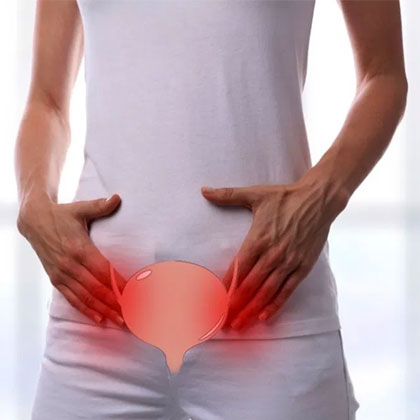Information
Urinary incontinence is involuntary urine leakage and has a terrible impact upon patient quality of life, limiting physical activity and adversely affecting self-esteem and personal relations.
It is an underdiagnosed disease. It is estimated that approximately 25% of the population, particularly women, suffer the condition. However, it is difficult to know exactly what percentage of the population suffers urinary incontinence; there is a tendency to underestimate its prevalence, since only 20% of those affected seek medical help (nobody likes to admit urine leakage), and in almost all cases the disorder is undertreated or treated incorrectly.
Causes
Urinary incontinence may be caused by physical factors such as tissue distension that occurs over the years, or after pregnancy, delivery or significant changes in body weight. There also may be hormonal causes such as estrogen loss during menopause that results in connective tissue weakening and loss of support, giving rise to weakening of the pelvic floor in general and of the urethral sphincter in particular.
Treatment for female urinary incontinence
Nowadays the most effective treatment option is the vaginal laser.

Vaginal CO2 laser
This is a physical procedure that stimulates the synthesis of new collagen in the connective tissue surrounding the urethra, contributing to its anatomical and functional closure, and thus avoiding urine leakage.
Independently of whether urinary incontinence manifests isolatedly or is accompanied by conditions such as vaginal dryness, hyperlaxity of prolapse, the CO2 laser is the treatment of choice, since it is able to treat all the disorders at the same time.

Emsella
An innovative treatment for urinary incontinence using high-tech electromagnetic therapy, which stimulates and strengthens the deep pelvic floor muscles of both women and men.
An excellent option for people of any age who wish to improve their quality of life with a non-invasive solution.
The most frequent types of urinary incontinence
The most frequent types of urinary incontinence in gynaecology are:
- Stress urinary incontinence (SUI)is characterized by involuntary urine leakage that occurs with increased abdominal pressure, when the bladder pressure exceeds the urethral closing pressure, as in situations of physical activity or exertion such as coughing, sneezing, laughing or lifting heavy objects. It is the most common form of urinary incontinence.
- Urge urinary incontinence (UUI)is characterized by involuntary urine leakage that accompanies an urgent desire to urinate, with involuntary bladder contractions that prevent the patient from "getting there on time". It is usually associated with increased micturition frequency both during the day and at night (nocturia).
- Mixed urinary incontinence (MUI) is urinary incontinence in which the symptoms of urine leakage are combined with an urgent need to urinate (mixed urge and stress incontinence).
- Hyperactive bladdermanifests as an urgent and sudden need to urinate, and may or may not be accompanied by urine leakage.
Urinary incontinence in any of its forms may appear isolatedly or accompanied by other disease conditions such as vaginal prolapse, hyperlaxity or atrophy.

Frequently asked questions
It is performed on an ambulatory basis in about 20 minutes and under topical local anaesthesia in the form of a cream, i.e., the procedure is completely painless.
The treatment is intravaginal and is applied with a cylindrical headpiece that can access all the vaginal walls with the help of an internal mirror. In this case we refer to the anterior wall of the vagina, which limits with the bladder and the urethra.
Artemédica, aesthetic, functional and regenerative gynecology center in Murcia.
The objective of this medical discipline is to improve the health, quality of sexual life as well as the aesthetics of the female intimate areas.





